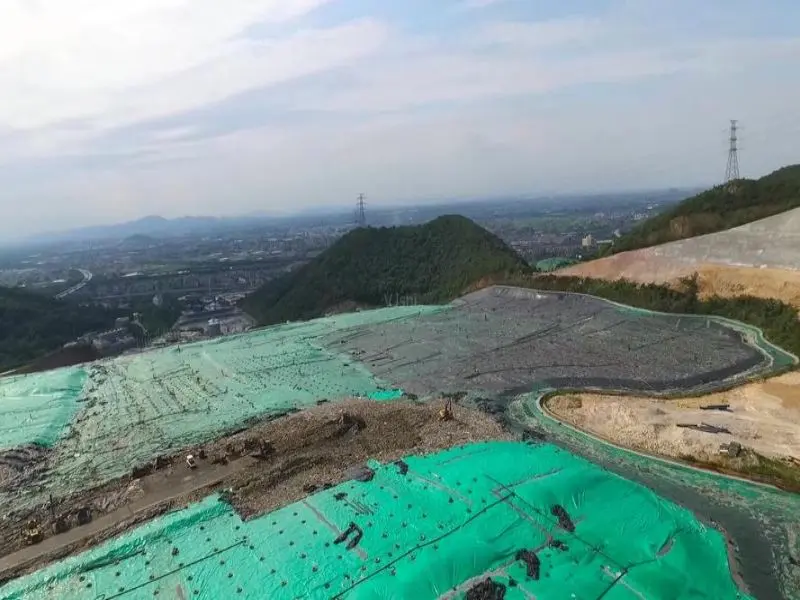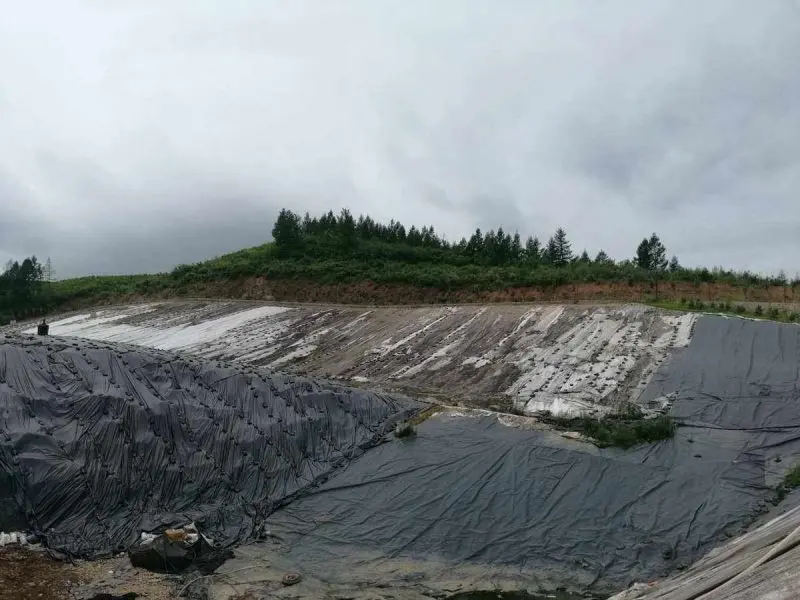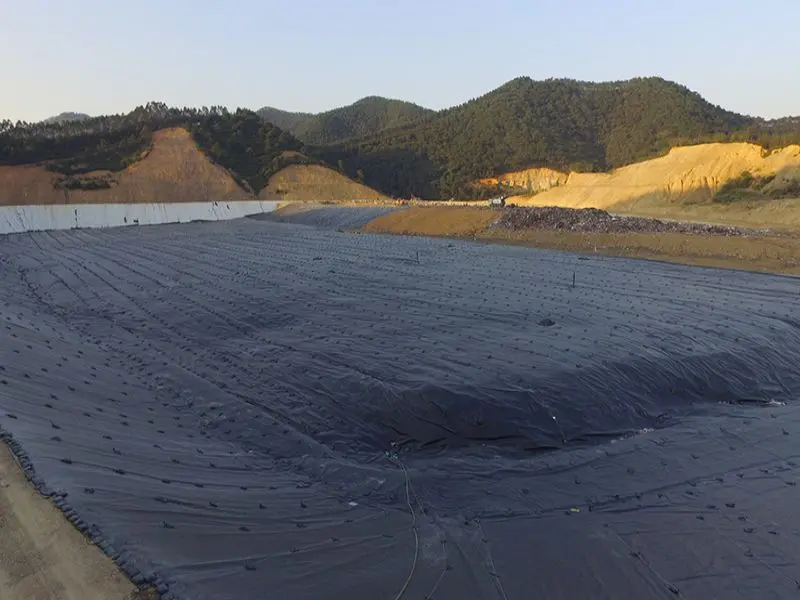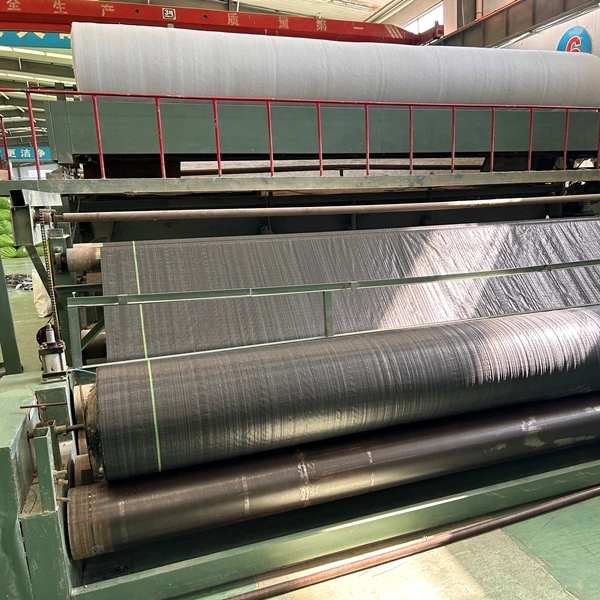Geosynthetic clay liners (GCLs) represent a revolutionary advancement in the field of geotechnical engineering, particularly in applications such as pond construction. These innovative materials have transformed the way we approach the design and construction of ponds, offering a multitude of benefits that enhance their efficiency, longevity, and environmental sustainability. In this comprehensive exploration, we delve into the various facets of GCLs and their indispensable role in pond engineering.
940771.webp)
Geosynthetic clay liner specifications
Property | National standard | Enterprise Standard | Inspection standards |
JG/T 193-2006 | |||
Geosynthetic Clay Expansionindex | ≥24 ml/2g | ≥25ml/2g | ASTM D5890 |
Mass Per Unit Area(g/m2) | ≥4800 g/m2 | ≥4800 gm2 | ASTM D5993 |
Tensile Strength | ≥6KN/m | ≥8KN/m | ASTM 4632 |
Maximum load elongation | ≥10% | ≥10% | ASTM 4632 |
Permeability | ≤5×10-9 | ≤5×10-9 | ASTM D5084 |
Moisture content | ≤15% | ≤15% | ASTM D4643 |
Peel strength | ≥40N | ≥65N | ASTM D4632 |
Hydrostatic pressure | 0.4Mp | 0.4~0.6Mp | ASTM D5891 |
Ponds serve a myriad of purposes, ranging from water storage and irrigation to recreational activities and ecological conservation. Regardless of their specific function, all ponds share the fundamental requirement of maintaining water integrity. Seepage and leakage can significantly compromise the functionality and structural integrity of ponds, leading to water loss, erosion, and environmental contamination. Geosynthetic clay liners emerge as a robust solution to address these challenges, offering a versatile and highly effective barrier system.
At the core of geosynthetic clay liners lies the innovative combination of natural clay and synthetic materials, engineered to harness the complementary strengths of both components. The clay component provides exceptional hydraulic conductivity and sealing properties, while the synthetic geotextile layers enhance mechanical strength, durability, and resistance to chemical and biological degradation. This synergistic blend results in a highly impermeable barrier capable of withstanding the rigorous demands of pond environments.
Seepage control stands as the paramount function of geosynthetic clay liners in pond construction. By strategically placing GCLs beneath the pond liner or at the base of the pond, engineers create a robust barrier that prevents water from infiltrating into the surrounding soil or escaping from the pond. This not only preserves water resources but also mitigates the risk of soil erosion, subsidence, and structural instability associated with excessive seepage.921125.webp)
Waterproofing constitutes another critical application of GCLs in pond engineering. The inherent impermeability of geosynthetic clay liners ensures the containment of water within the pond, safeguarding against leaks and maintaining water levels at desired capacities. This is particularly crucial in arid regions or areas prone to drought, where efficient water management is essential for sustaining agricultural, industrial, and domestic activities.
Erosion control represents a vital aspect of pond management, especially in the context of shoreline protection and sediment retention. Geosynthetic clay liners play a pivotal role in stabilizing pond banks and bottoms, effectively resisting erosive forces exerted by water currents, wave action, and fluctuating water levels. By preventing soil displacement and erosion, GCLs contribute to the preservation of aquatic habitats, vegetation, and ecosystem diversity surrounding the pond.
Environmental protection emerges as a central theme in the utilization of geosynthetic clay liners, reflecting a commitment to sustainable engineering practices. By containing pollutants, contaminants, and hazardous substances within the pond enclosure, GCLs help mitigate the adverse impacts of human activities on soil and groundwater quality. This is particularly relevant in agricultural ponds, industrial retention basins, and wastewater treatment facilities, where strict regulatory compliance and environmental stewardship are imperative.
Stability enhancement constitutes another notable benefit afforded by geosynthetic clay liners in pond construction. By providing a stable foundation and preventing soil movement, GCLs contribute to the structural integrity and longevity of the pond infrastructure. This is essential for ensuring safe operation, minimizing maintenance requirements, and prolonging the service life of the pond facility.
Construction efficiency emerges as a compelling advantage associated with the use of geosynthetic clay liners, offering significant time and cost savings compared to traditional methods. The lightweight and flexible nature of GCLs facilitate rapid installation and deployment, reducing labor costs, equipment requirements, and construction downtime. Moreover, the minimal site disturbance and excavation associated with GCL installation minimize environmental disruption and habitat disturbance, aligning with principles of sustainable development.
Cost-effectiveness represents a pivotal consideration in pond engineering projects, where lifecycle costs and long-term performance are paramount. While the initial investment in geosynthetic clay liners may surpass that of conventional materials, the substantial benefits accrued over the operational lifespan of the pond outweigh the upfront expenditure. From reduced maintenance and repair expenses to enhanced water conservation and environmental compliance, GCLs offer a compelling value proposition that translates into tangible economic savings and environmental dividends.
In conclusion, geosynthetic clay liners epitomize innovation, versatility, and sustainability in pond engineering, offering a comprehensive solution to address seepage control, waterproofing, erosion control, environmental protection, stability enhancement, construction efficiency, and cost-effectiveness. As the demand for reliable water infrastructure continues to escalate in response to population growth, urbanization, and climate change, GCLs will undoubtedly remain at the forefront of pond design and construction, empowering engineers to create resilient, resource-efficient, and environmentally sustainable water management solutions for generations to come.
927.webp)
580.webp)
367.webp)
357.webp)


503.webp)
759.webp)

109.webp)